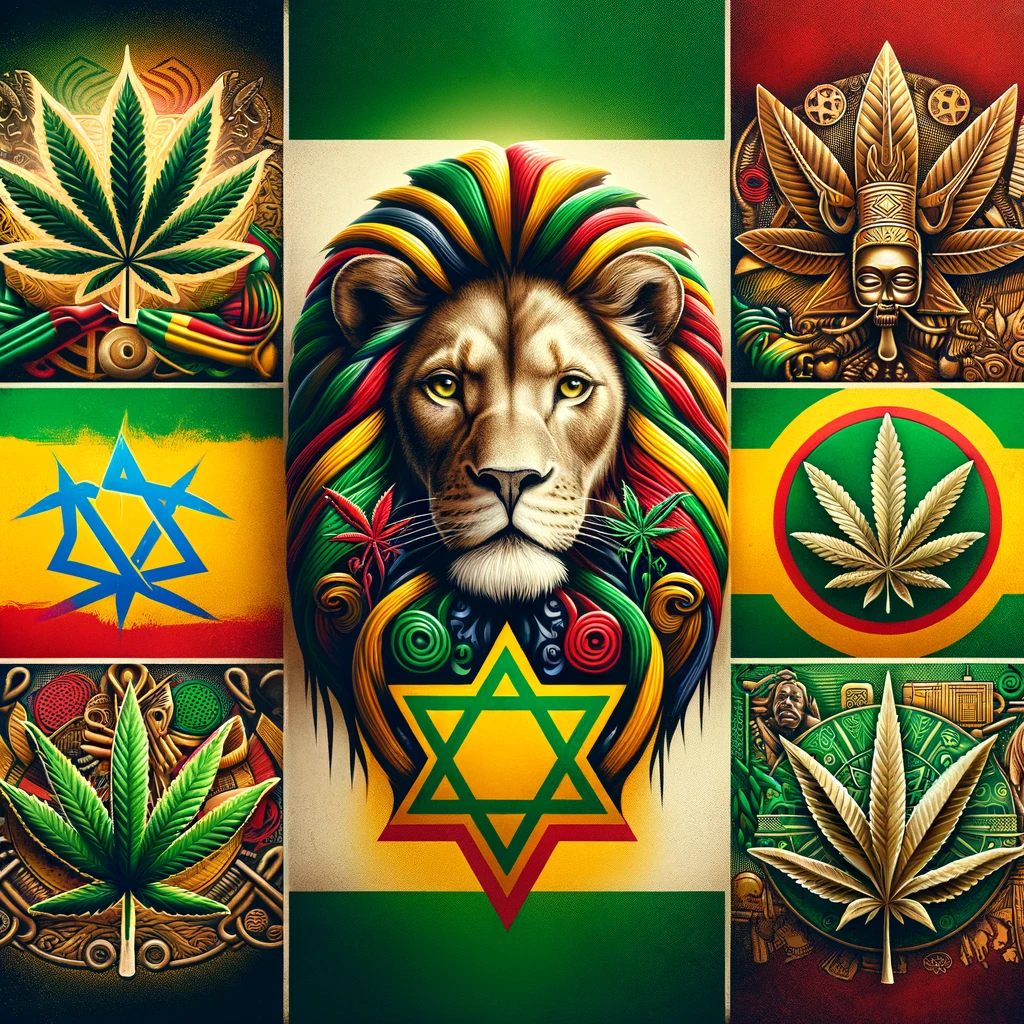Rastafari culture is rich with symbols that convey deep spiritual and cultural meanings. These symbols serve as visual representations of the movement’s beliefs, values, and struggles.
1. The Lion of Judah
The Lion of Judah is one of the most powerful symbols in Rastafari culture. It represents strength, kingship, and the lineage of Haile Selassie I, who is believed to be a direct descendant of King Solomon and the Queen of Sheba. The lion also symbolizes the courage and resilience of the Rastafari people in their struggle against oppression.
2. The Ethiopian Flag
The Ethiopian flag, with its green, gold, and red stripes, holds great significance for Rastafarians. Each color has a specific meaning: green represents the land and its lush vegetation, gold symbolizes the wealth and prosperity of Africa, and red stands for the bloodshed of martyrs who fought for liberation. The flag symbolizes the connection to Ethiopia, seen as the Promised Land, and the hope for repatriation.
3. The Star of David
The Star of David, or the Seal of Solomon, is another important symbol in Rastafari culture. It signifies the link between Rastafari beliefs and biblical teachings, as well as the divine protection and guidance of Jah. The symbol also underscores the spiritual heritage and the connection to ancient Israel.
4. Ganja
Ganja, or cannabis, is considered a sacred herb in Rastafari culture. It is used in religious ceremonies to enhance meditation and spiritual insight. The use of ganja symbolizes the pursuit of wisdom, peace, and the rejection of Babylon (the corrupt Western world). It is seen as a natural and divine gift from Jah.
5. The Conquering Lion
The Conquering Lion symbolizes the victory of good over evil and the eventual triumph of the righteous. It is often depicted with a crown and a scepter, representing Haile Selassie I as the King of Kings and Lord of Lords. This symbol reinforces the Rastafari belief in the divine rule of Selassie and the ultimate redemption of his followers.
Closing Thoughts
Rastafari symbols are not just decorative; they are profound representations of faith, identity, and resistance. They embody the movement’s spiritual beliefs and its enduring fight for justice and liberation.

